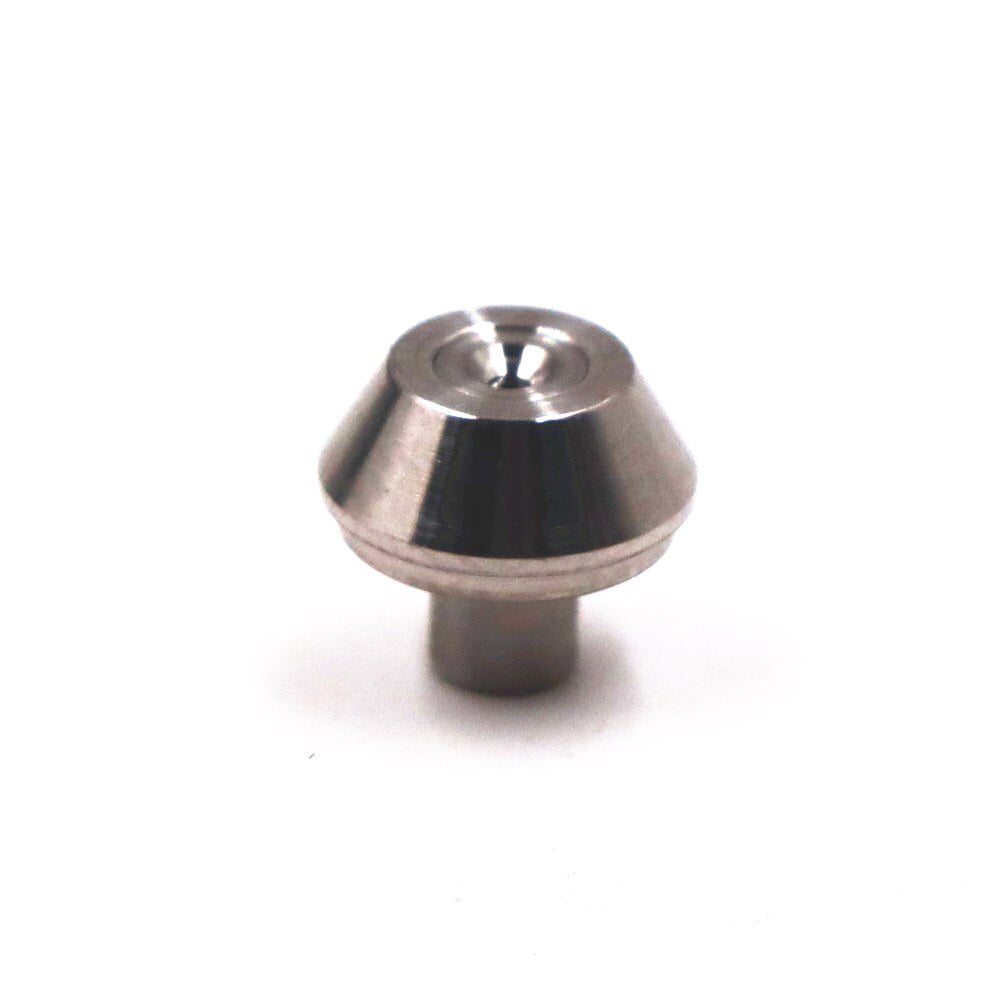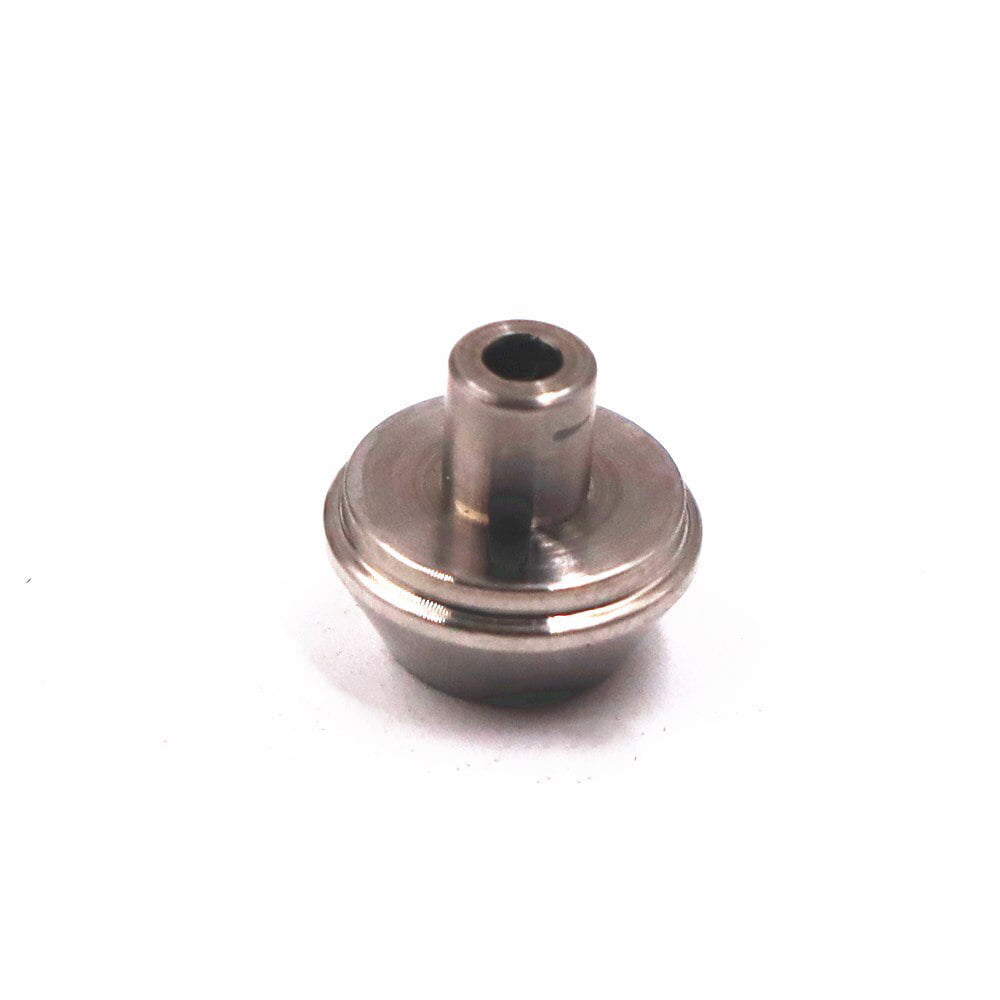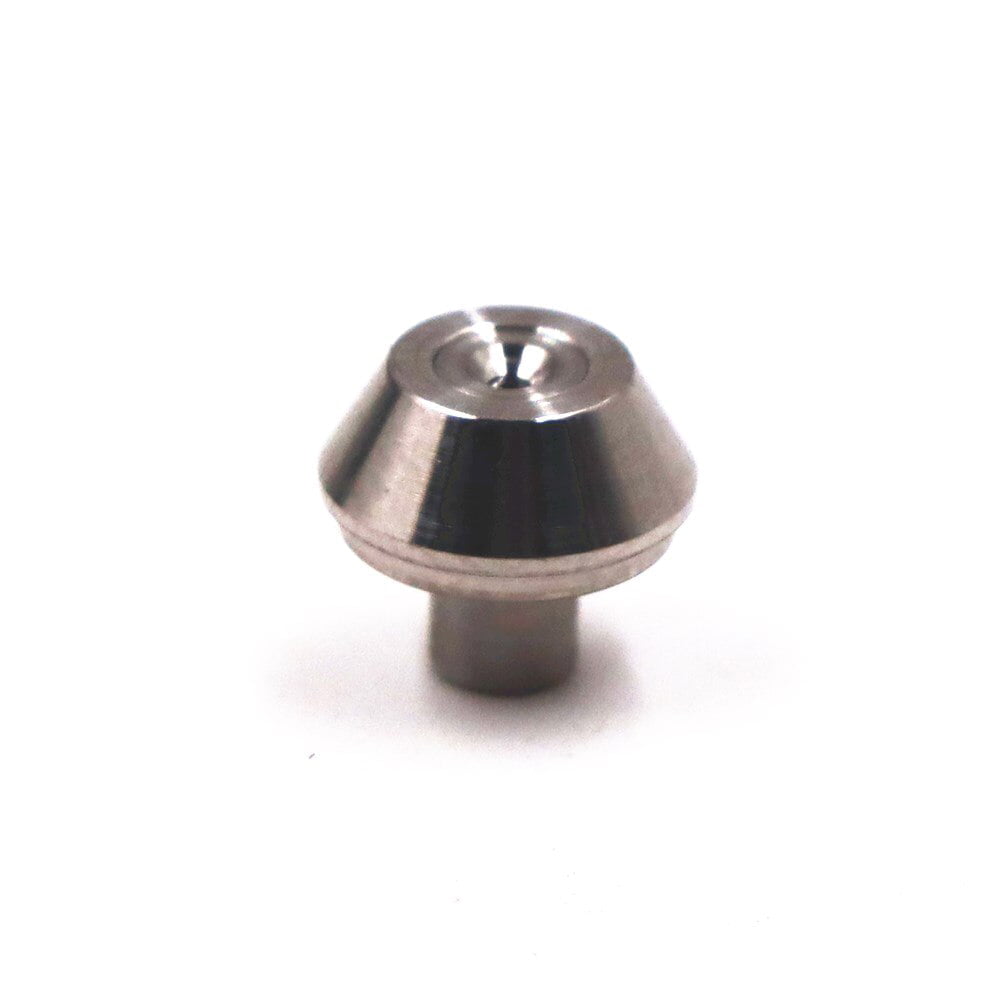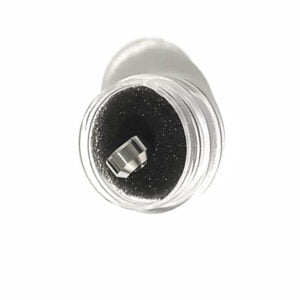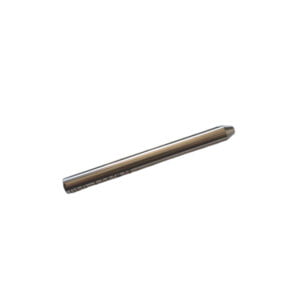Description
05136098 Tête de coupe au jet d’eau à orifice diamant

Kowledge for waterjet orifice:
The types of orifices used in the water jet cutting machine include sapphire, ruby, diamond, etc. The aperture of orifices is generally 0.12mm-0.45mm. Generally, orifices with 0.33mm diameter are most commonly used in abrasive mixing cutting, and 0.17mm is most commonly used in water-only cutting. The greater the aperture, the greater the horsepower and pump performance required to maintain the pressure.
Sapphire orifice of Waterjet Cutting Head:
Sapphires are transparent stones that can vary in color from dark blue to light blue. In the ultra-high pressure water jet equipment, due to the unique single crystal characteristics of sapphire, the sapphire orifice has good high pressure and wear resistance, which is suitable for 280MPA-680MPA ultra-high pressure water jet equipment.
Ruby orifice of Waterjet Cutting Head:
Rubies are clear gemstones that can vary in color from deep red to light pink. In the ultra-high pressure water jet equipment, due to the unique single crystal characteristics of ruby, the orifice has good high pressure and wear resistance, which is suitable for 280MPA-680MPA ultra-high pressure water jet equipment.
Diamond orifice of Waterjet Cutting Head:
Diamonds are colorless gemstones that are among the hardest substances on Earth, 58 times harder than anything found in nature.
Waterjet diamond orifices are used in waterjet cutting machines to create a high-pressure stream of water that can cut through a variety of materials such as metal, stone, and glass 1. Diamond orifices are the hardest and strongest orifice available in the industry and have the longest lifespan of 1000-2000 hours cut hours from waterjet use.
- The maximum pressure that Diamond orifice can withstand is 90,000 psi, it can be used in ultra-high pressure water jet cutting machines, usually used to cut ultra-thick metal, stone and so on.
- So naturally it can also be used on a 60,000 psi waterjet cutting machine and last longer.

How to choose Waterjet Cutting Head water jet cutting orifice?
Water jet orifice refers to a special orifice installed on the Waterjet Cutting Head when the waterjet cutting machine is cutting materials. Its function is to form a fine liquid column of high pressure water flow to impact the surface of the material at high speed to achieve the purpose of cutting. The quality and life of water jet orifice directly affect the efficiency and accuracy of water waterjet cutting. Therefore, the following aspects should be paid attention to when choosing water jet orifice:
Material: The material of Waterjet Cutting Head water jet orifice generally includes ruby, sapphire, diamond, etc., among which ruby and sapphire are synthetic and diamond is natural. Different materials have different hardness, wear resistance and price. Generally speaking, diamond has the best performance, but it is also the most expensive. Ruby and sapphire have similar performance, but they are much cheaper than diamond. Choose the right material according to your needs and budget.
Specifications: The specifications of water jet orifice mainly include outside diameter, inside diameter, length, Angle and other parameters, which determine the Waterjet Cutting Head water jet orifice water morphology and speed, as well as suitable for cutting of different thickness and material. Generally speaking, the larger the outside diameter, the slower the water flow rate, suitable for cutting thick materials; The smaller the inner diameter, the faster the water flow rate, suitable for cutting materials with small thickness; The longer the length, the more stable the effluent form, suitable for precision cutting; The smaller the Angle, the more slender the outlet form, suitable for deep cutting. According to their cutting needs, choose the appropriate specifications.
Brand: The brand of the Waterjet Cutting Head water jet orifice is also an important reference factor. Different brands have different production processes, quality control and after-sales service. In general, well-known brand water jet ports are more reliable and durable, but also more expensive; Small or unbranded water jet orifices may be cheaper, but may also have quality or after-sales issues. Choose the right brand based on your brand trust and price sensitivity.
The advantages and disadvantages of using different orifices in waterjet cutting machines depend on the hardness and brittleness of the orifices. Diamonds, for example, are the hardest orifices, so higher pressure water jet cutting machines are needed. However, because diamonds are brittle materials, care needs to be taken when cutting to avoid damaging the orifices. Other orifices, such as sapphires and rubies, are relatively soft and can therefore be cut using water jet cutting machines with lower pressure.
The service life of Waterjet Cutting Head rubies varies with many factors, such as cutting speed, pressure, orifice diameter and orifice hardness. It has a lot to do with the quality of water. In the case of good water quality, its life is longer. If your sprinkler hole always needs to be replaced frequently, please check the water quality, the accuracy of the components, the status of the filter element and the stability of the pressure of the booster pump.
Waterjet Cutting Head Ruby orifice service life is 60-80 hours.
Waterjet Cutting Head Sapphire orifice service life is 80-120 hour.
Waterjet Cutting Head Diamond orifice service life is 1000-2000 hours.
Ruby is a commonly used orifice material because of its high hardness and wear resistance. The advantages of ruby orifices include: high wear resistance, high hardness, high temperature stability, high corrosion resistance and low friction coefficient. In addition, ruby orifices provide longer service life and better cutting quality.
According to the waterjet cutting system, the waterjet cutting used is 0 to 420 mpa pure deionized water and filtered water. The orifice is made of sapphire or diamond to ensure the ability to produce a long and stable waterjet cutting. The advantages of sapphire include: high wear resistance, high hardness, high temperature stability, high corrosion resistance and low friction coefficient. In addition, sapphire orifices provide longer service life and better cutting quality.
According to diamond is a commonly used orifice material because of its high hardness and wear resistance. The advantages of diamond orifices include: high wear resistance, high hardness, high temperature stability, high corrosion resistance and low friction coefficient. In addition, diamond orifices provide longer service life and better cutting quality.
The change cycle for Waterjet Cutting Head Waterjet orifice depends on the gemstone material, cutting pressure, cutting speed and the material used for orifice. The typical life of a ruby orifice is 200 to 400 hours; a sapphire orifice is 400 to 800 hours; and a diamond orifice is 800 to 1,200 hours. The replacement time of water waterjet orifice can be judged according to the following aspects:
Observe the appearance of the orifice, if the Waterjet Cutting Head orifice is found to have cracks, wear, deformation and other damage, it needs to be replaced.
Observe the shape of the water jet, and if the water jet is found to be not concentrated, dispersed, skewed and other abnormal phenomena, it needs to be replaced.
Observe the cutting effect, if it is found that the quality of the incision is reduced, the cutting speed is reduced, the cutting accuracy is reduced and so on, it needs to be replaced.
Observe the cutting cost, if it is found that the cutting cost increases, power consumption increases, water consumption increases, etc., it needs to be replaced.
What is the annual consumption of Waterjet Cutting Head Waterjet orifice?
Waterjet orifice is an important Waterjet Cutting Head orifice consumer in the waterjet cutting process, and its quality and longevity influence the effectiveness and cost of orifice cutting. The annual consumption of Waterjet orifice depends on a number of factors, including the material about which Waterjet orifice is made, the size, the pressure, the quality of the garnet abrasive and the hardness and thickness of the material for which it is cut. The life expectancy for Waterjet ruby orifice is typically about 60 to 80 hours, and some high-quality Waterjet orifice is 100 to 300 hours. Assuming an eight-hour workday and 300 days a year, the annual consumption is about 30 to 200 Waterjet orifice. Of course, this is only an estimate and the reality may vary. If you want to reduce consumption of the Waterjet orifice, you can note the following:
Choose a suitable source of water, preferably household tap water, and avoid water containing impurities or corrosive water.
Choose the garnet abrasive produced by regular manufacturers, to ensure its purity and granularity, to avoid the use of inferior garnet sand caused by orifice damage.
According to the nature and requirements of the cutting material, choose the right pressure and speed to avoid excessive wear or inefficient orifice caused by too high or too low pressure.
Check and replace orifices regularly, keep them clean and in good condition, detect and deal with abnormal situations in time.
How is Waterjet Cutting Head Waterjet orifice replaced and maintained?
The orifice of Waterjet Cutting Head is an important component of the waterjet cutter. It needs to be replaced and maintained by following the steps 1:
Observe the flow of water gushes out at Waterjet Cutting Head Waterjet orifice and open it at low pressure. The flow should be symmetrical and its width depends on the type of Waterjet orifice used. If the flow starts to widen, the Waterjet orifice is damaged and should be replaced immediately.
Inspect the Waterjet Cutting Head regularly for signs of wear or damage (often caused by accidental contact with parts or fixtures). If the cutting head inlet is found to be blocked, or the abrasive pipe is cracked, it must be addressed to maximize the efficiency of the system.
Periodically inspect and replace consumable parts of the abrasive delivery system, such as pipes and joints. Ensure that no parts of the abrasive delivery system below the bottom of the miniature hopper are exposed to air.


